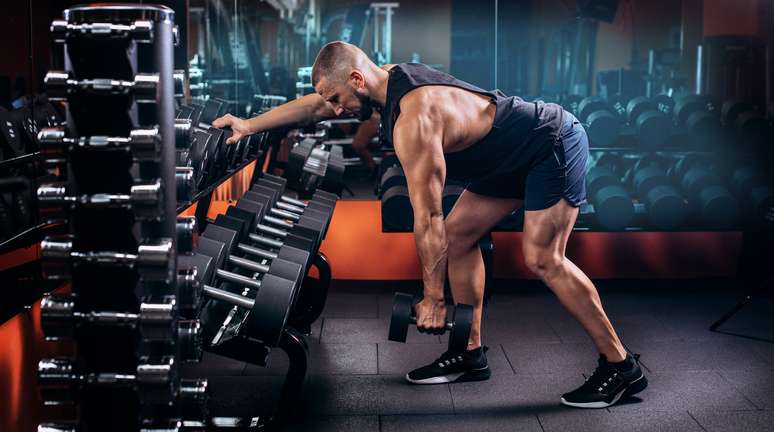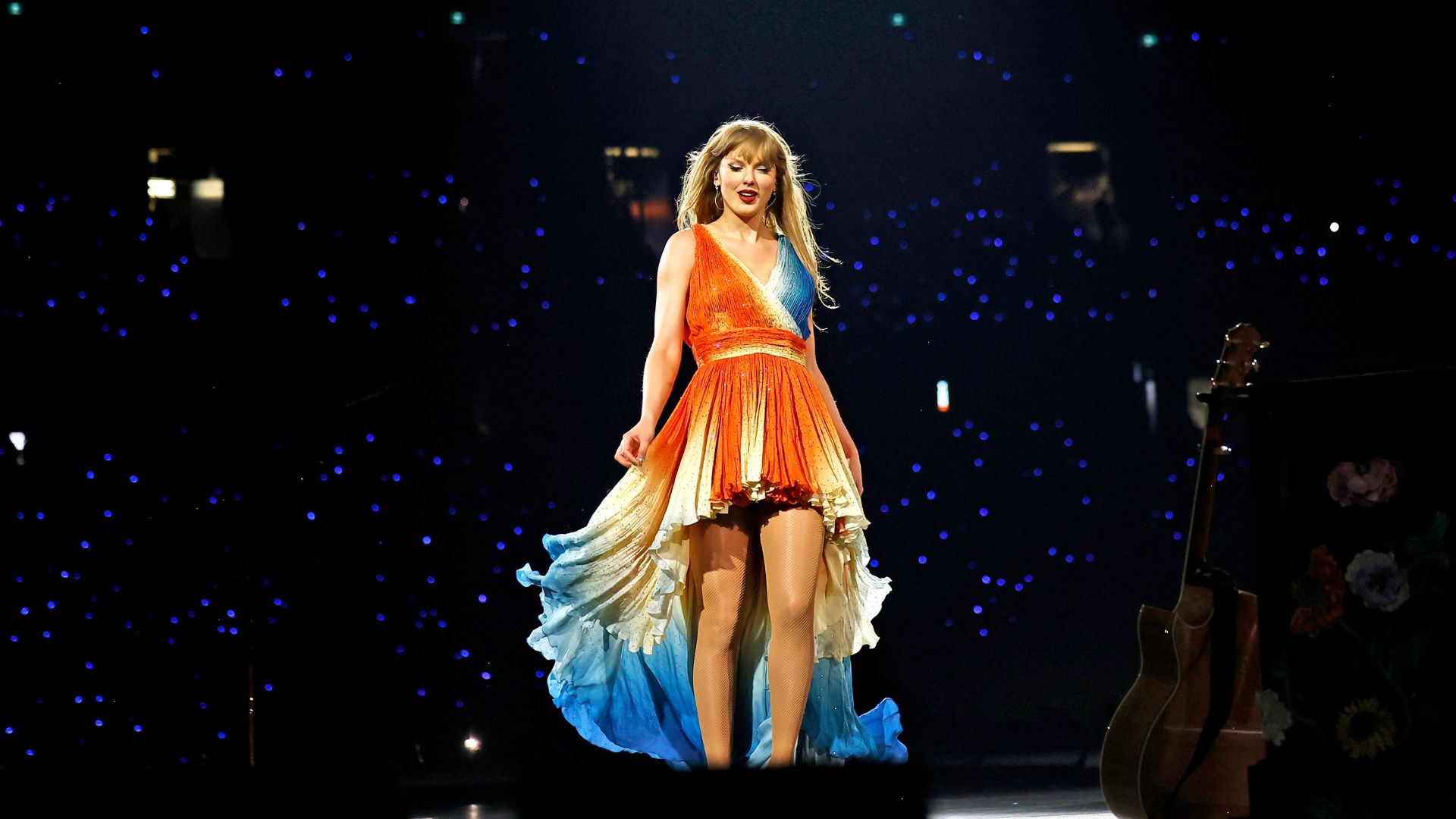Find out which ones are best suited to set up your training focused on these muscles
The back and biceps are usually muscle groups that are trained on the same day in many gym training strategies. This is because both regions are trained through pulling movements, you know?
In other words, they are exercises in which the muscle activation occurs from the flexion of the elbow, such as those performed on fixed bars, with dumbbells, on a machine or on a pulley. Therefore, many instructors create workouts in which the biceps workout is performed at the end of the back workout, providing extra activation of this part of the arms.
However, this is not a rule and you can train biceps on an isolated day, for example on an arms-only day (along with triceps).
Back and biceps exercises in the gym
We spoke with physical educators Emilio Maia and Livia Meli, from Evoque Gym, to list the best back and biceps exercises in the gym. Check out the list and find out how to do them!
1. Front pull
It’s an exercise that works muscles like the latissimus dorsi, posterior deltoid (shoulder), trapezius, teres major and minor, and activates the biceps brachii. “It’s great for those who want to expand their back, the popular ‘V shape,'” says the trainer. You can use a supinated grip, with your palms facing your body, or a pronated grip, facing forward.
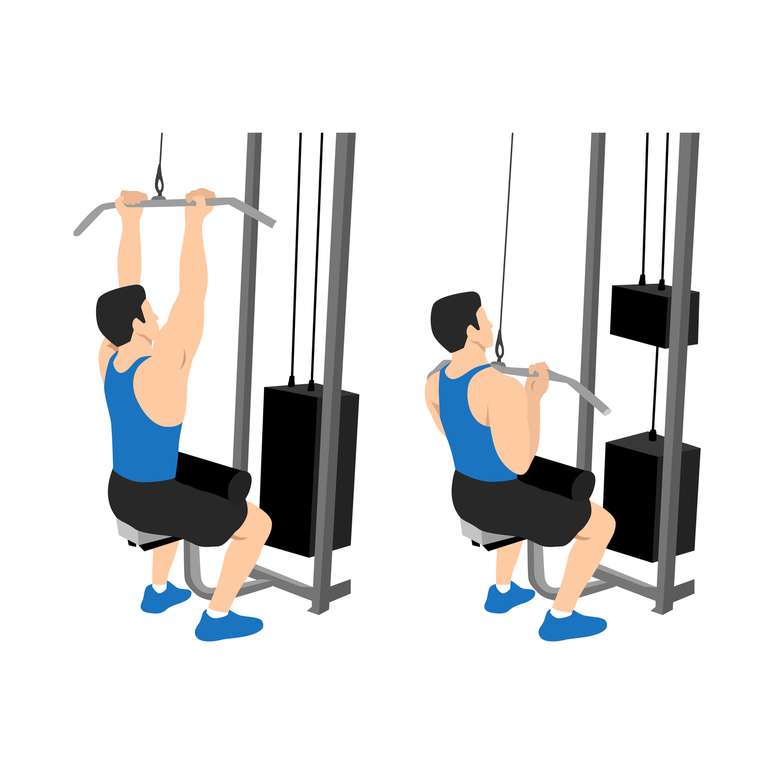
2. Low triangle line
One of the most used exercises for the back, since it involves different muscles, such as the latissimus dorsi and the trapezius, the posterior deltoid and the biceps brachii. “Ideal for those looking for volume in the center of the back,” explains Livia.
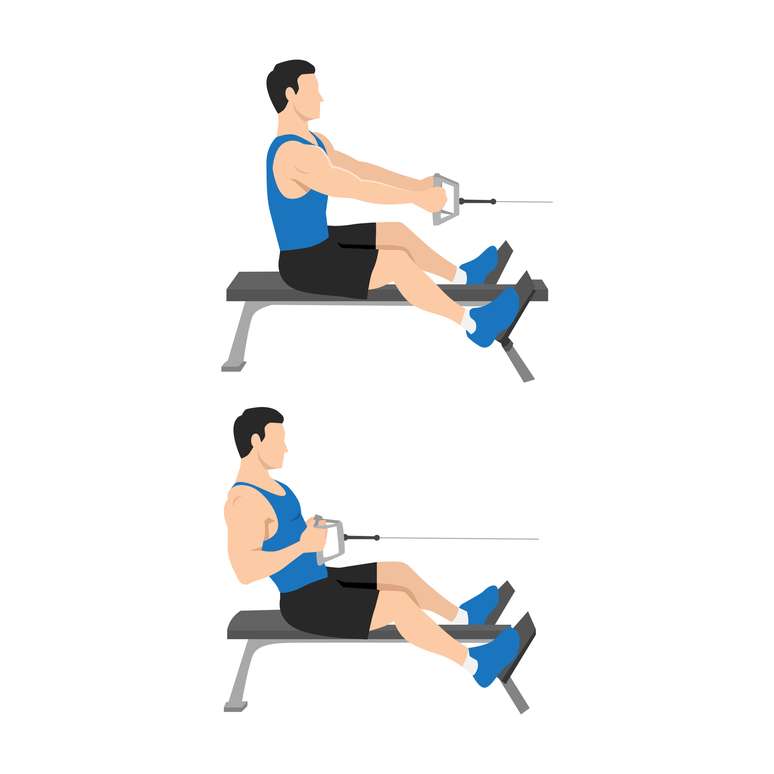
3. Rowing with a wheelie
“It’s an ancient variation, but still very popular today, that works the entire latissimus dorsi, trapezius and rhomboid, in addition to activating the biceps and abdomen. It’s ideal for adding volume to the mid-back and allows for good progression of the load,” comments the coach.
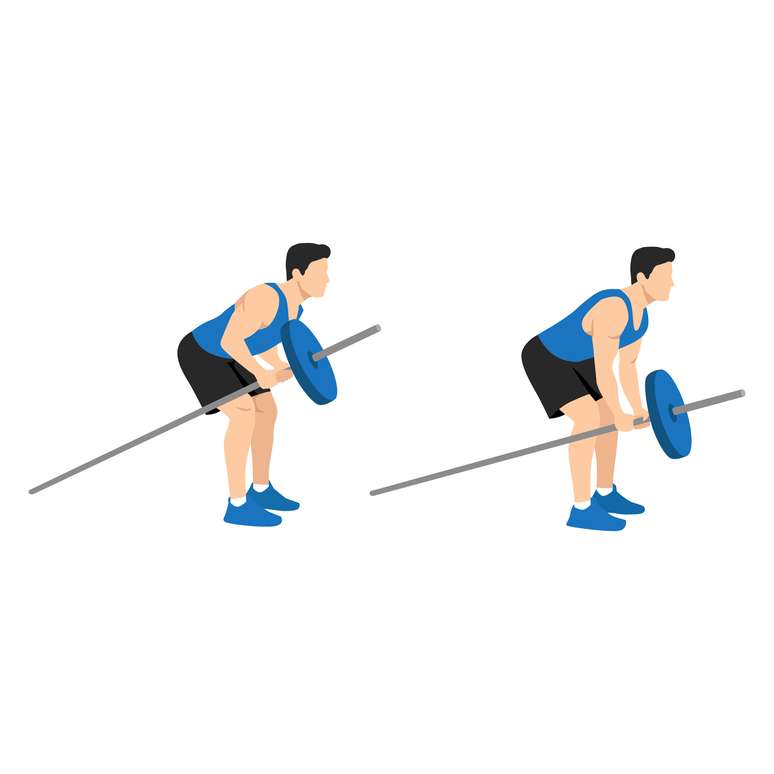
4. Bent Row
Another widely used variation, with work on the latissimus dorsi, posterior deltoid, teres major and minor and trapezius in the lower portion and with great activation of the biceps brachii, especially in the supinated grip (hands facing the body), in which the work of the biceps is greater, which favors greater lifting of the load. It can be performed with dumbbells, barbell or even on a pulley.
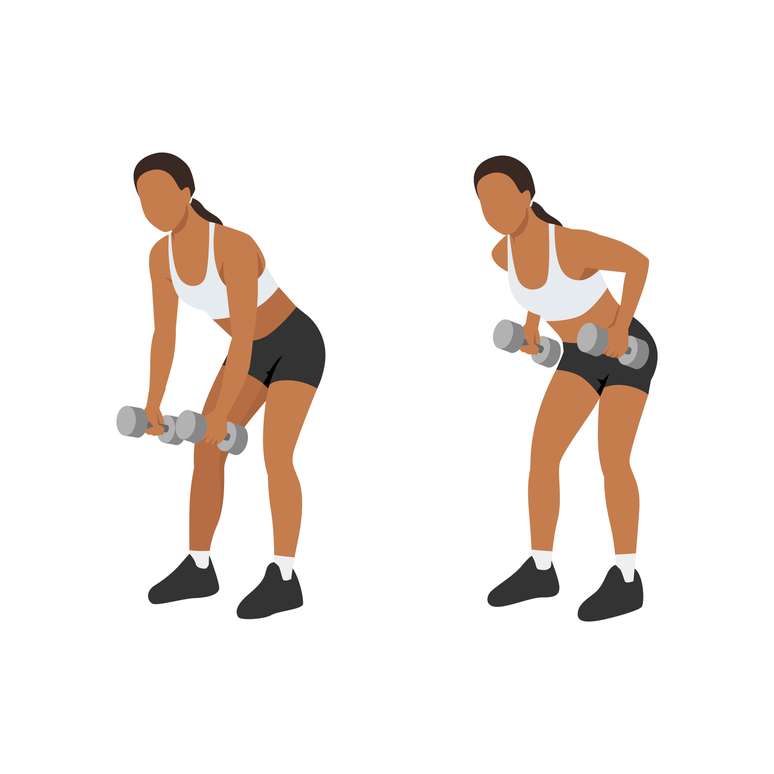
5. Barbell curl
This is considered the main exercise focused on the biceps, performed with extension and flexion movements of the elbow. “It mainly activates the biceps brachii (the largest portion of this muscle), being the most used in gyms,” explains the professor. The barbell curl is performed standing, with the arms fixed and the elbow flexed, and can be performed with bars, dumbbells or using a pulley.
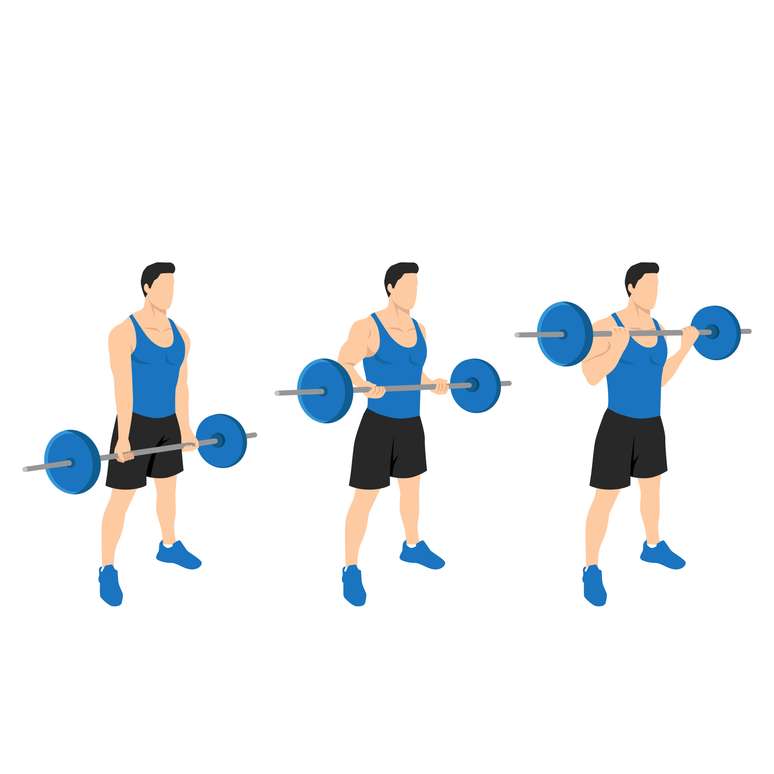
6. Scott Thread
This is considered another classic biceps exercise, as it also activates the biceps brachii. “But it allows you to isolate the target muscles more thanks to the stabilization of the elbows,” adds the professor. The Scott curl is performed in a seated position, with the elbows resting on a special support, and can be performed with a barbell, dumbbells or using a pulley.
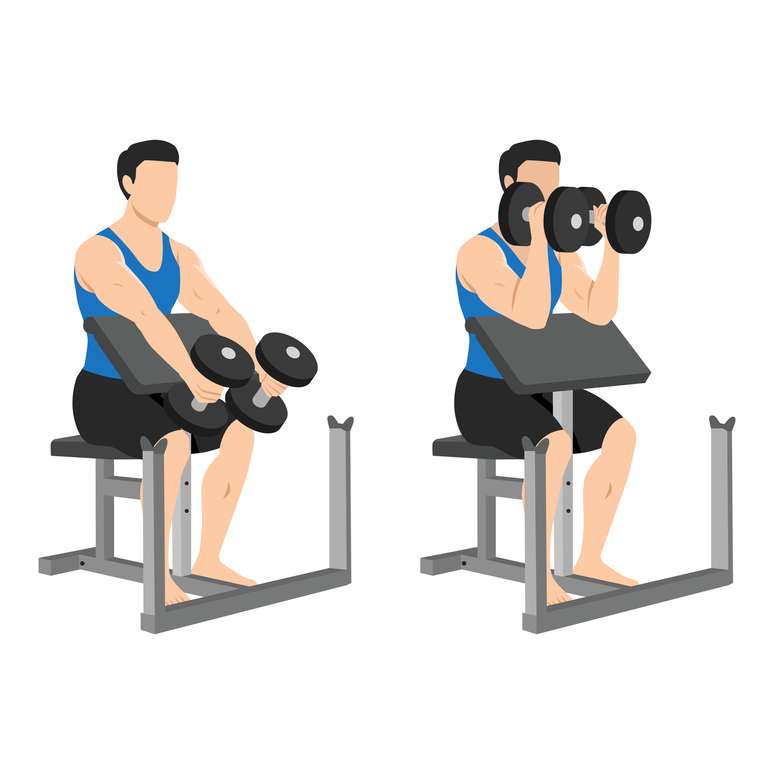
7. Hammer curl
“Another widely used variation, different from the neutral grip barbell curl, performed for the biceps brachii and brachioradialis,” explains the professor. It is preferably performed with dumbbells, with the palms facing inward, but can also be performed with a special “H”-shaped bar or on a pulley, with a rope.
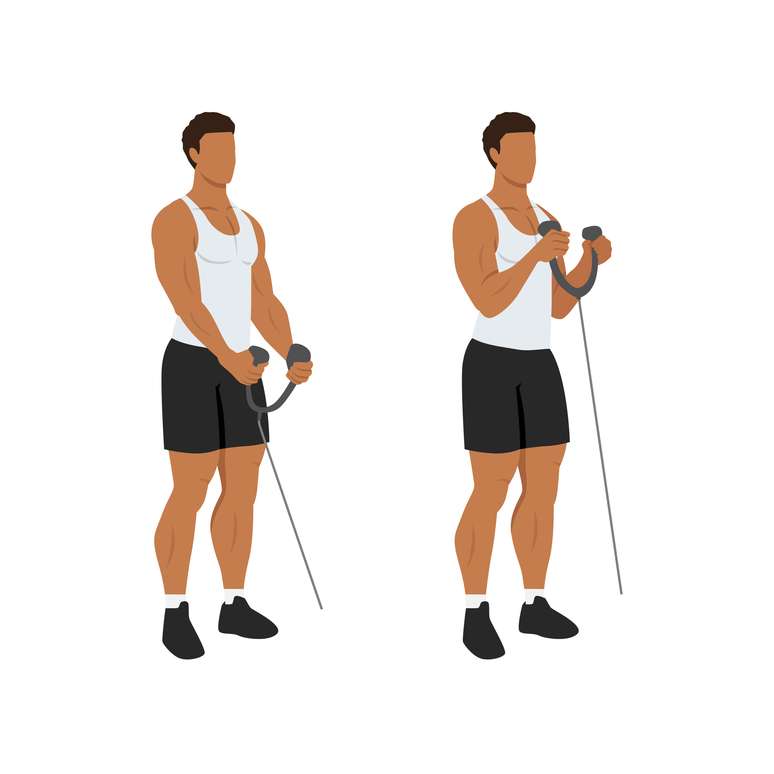
8. Alternating curl
Like the barbell curl, it works the biceps brachii, brachioradialis, and brachialis, “but it’s a more adaptable form for beginning students, who probably won’t have the strength for a pull-up,” says the instructor. It’s performed with dumbbells or on a pulley with alternating movements.
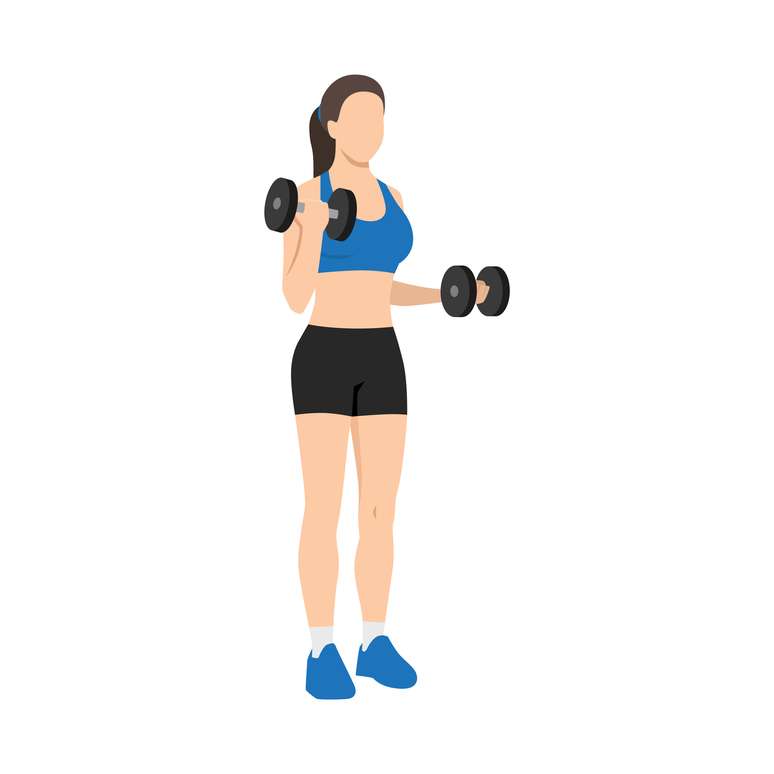
Conclusion
It is worth noting that this is not an indication of a training sequence, but rather a selection of the best exercises for each muscle group. It is worth emphasizing that, if you are a beginner, the ideal is to have the help of a physical education professional to set up your training, avoiding mistakes that can cause injuries and lack of motivation.
Source: Terra
Ben Stock is a lifestyle journalist and author at Gossipify. He writes about topics such as health, wellness, travel, food and home decor. He provides practical advice and inspiration to improve well-being, keeps readers up to date with latest lifestyle news and trends, known for his engaging writing style, in-depth analysis and unique perspectives.

